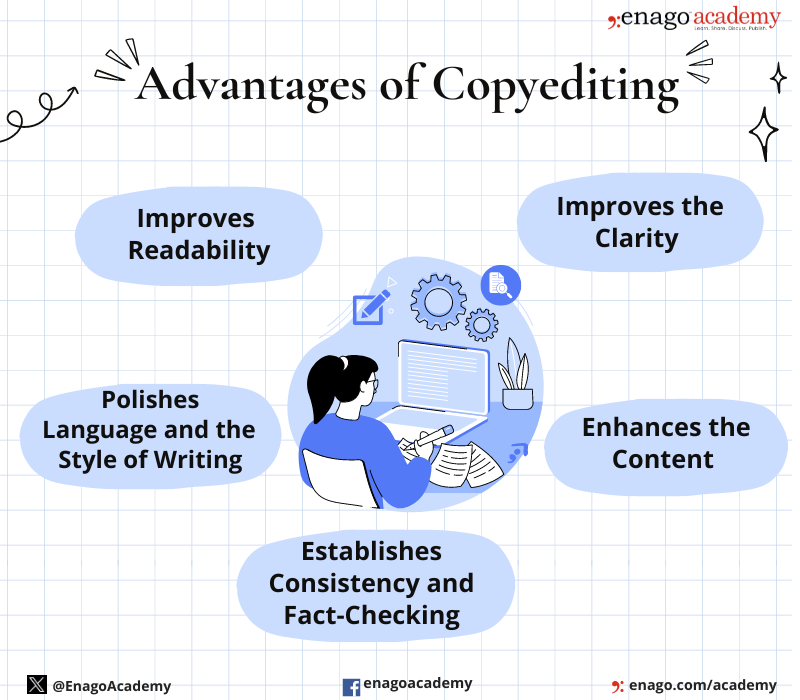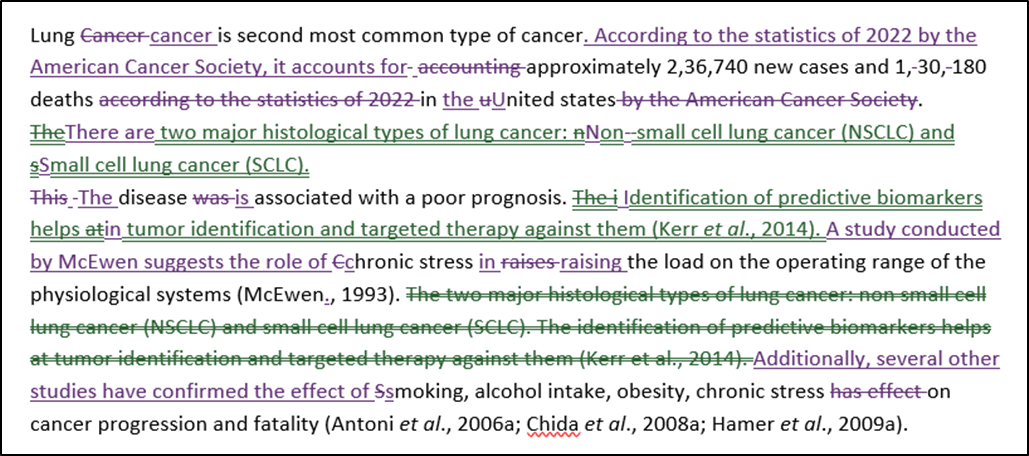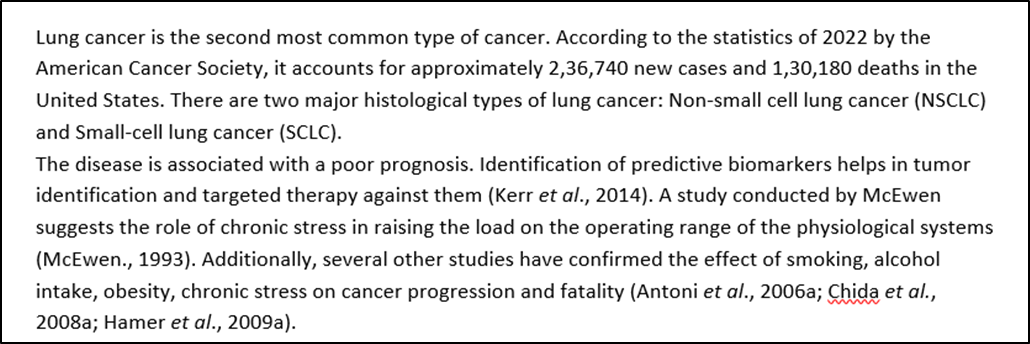Beyond Spellcheck: How copyediting guarantees error-free submission

Submitting a manuscript is a complex and often an emotional experience for researchers. Whether it’s your first manuscript or tenth, each submission offers a unique learning experience. Every submission is a reflection of countless hours of dedication and effort. As a researcher or a student, what was the most towering challenge before presenting your work to a journal’s critical eye? Undoubtedly, it would be sculpting your first draft to a final polished masterpiece! But, which draft is the final draft? How much editing is too much editing?
This is an unsolved riddle that perplexes even the most experienced researchers. Many students and researchers engage hours in self-editing in pursuit of perfection. Yet, they receive heartbreaking rejections that end up casting shadows of self-doubt. Eventually, they begin to question the very essence of their research prowess. But, is only basic grammar check and edits or using a non-proficient AI tool enough? Researchers often overlook the transformative power of copyediting in enhancing the manuscript’s quality. Little do they realize the magic of copyediting.
What Is Copyediting
Copyediting is reviewing a text to improve its readability in order to offer the best version of a document. Additionally, it checks various aspects of writing such as grammar, punctuation, clarity of thought, consistency, etc. to make the document more professional and presentable. Moreover, it holds the power to increase the credibility of your research and increase the chances of acceptance by the journal of your interest.
Why is Copyediting Important
Copyediting plays an indispensable role in various areas of research publishing. It holds the power to abate your submission as it ensures an effective delivery of the content. It enhances the overall impact of the manuscript by enhancing the consistency in writing. Therefore, it can play a make-or-break game for your submission. The ultimate goal of copyediting is to polish your draft and make it publication-ready. It presents your research in the best possible light. Additionally, it makes it easier for readers to engage with and understand your findings.
When to Copyedit?
Copyediting is a critical step in the editorial process that should be undertaken after the completion of the initial draft of a written work. Additionally, copyediting is best carried out once the substantive editing or developmental editing and revisions have been completed, ensuring that the content is well-structured and coherent. It is the third stage of editing, usually done before proofreading the document. Furthermore, it aligns the structure of the text and makes the information comprehensible. The process fixes technical errors without changing the context; thus making it easier for proofreading.
Copyediting and proofreading are two different steps in editing serving individual roles. Therefore, understanding the difference between these steps can be helpful in making a wise choice while editing a manuscript.
Difference Between Copyediting and Proofreading
Copyediting and proofreading are often used interchangeably, leading to confusion about their different roles. Proofreading is usually done in the final stages of editing to check grammar and punctuation. It is done for a quality check of the document. Although both the steps are crucial to ensure accuracy of the text, each of them serves a different purpose.
Here’s a tabular comparison between copyediting and proofreading:
Copyediting |
Proofreading |
| Improves the overall clarity and quality of content | Corrects errors in grammar, spelling, and style |
| Involves a comprehensive checking of content and style | Involves a limited checking; which is primarily focused on surface errors |
| Looks for grammar, punctuation, syntax, style and consistency | Checks spelling, punctuation, and formatting |
| Ensures consistency in adherence to the style guide | Ensures consistency in language and formatting |
| Organizes the logical flow and coherence of the content | Does not review or modify content |
| May rephrase or reorganize sentences | Focuses on corrections without rewriting the sentence |
| Typically done before proofreading | The final step, after copyediting |
| Improves the manuscript’s readability and quality | Ensures accuracy |
| Uses style guides, dictionaries, and references | Focuses on proofreading marks and details |
| Prepares the document for publication or submission | Polishes the document for errors before publication |
| Copyeditors are hired for copyediting | Proofreaders are hired for proofreading |
Remember that although copyediting and proofreading have distinct roles, they are often part of the same editorial process, with copyediting preceding proofreading. The two processes work together to ensure a high-quality, error-free document.
Advantages of Copyediting
Copyediting makes the document more readable by adding a logical flow to the text. Additionally, it offers comprehensive revision, language and style polishing, consistency checks, and content enhancement that goes beyond the scope of traditional proofreading.
Some advantages of copyediting are as follows:

1. Improves Readability
Copyediting delves deep into the content and makes the text more coherent. The step examines clarity and consistency of the text. Furthermore, it fixes the overall structure, organization of ideas, and flow of the writing, and ensures that the message is conveyed effectively. By addressing issues related to logic, copyediting improves the overall readability of the document to grab the reader’s interest to your text.
2. Polishes Language and the Style of Writing
Copyediting refines the language and style of the text. It ensures that the writing is concise and suitable for the intended audience. Furthermore, it improves the sentence structure, word choice, and grammar, resulting in a more polished and professional output.
3. Establishes Consistency and Fact-checking
Inconsistencies in writing can distract the readers and undermine the authority of your content. Copyediting fixes these issues by ensuring consistency in spelling, punctuation, capitalization, and formatting throughout the text. Moreover, it includes fact-checking to verify the accuracy of information in the content. This establishes credibility and minimizes the risk of misinformation in the material.
4. Improves Clarity
One of the primary goals of copy editing is to enhance clarity and coherence of writing. A copy editor will rephrase or restructure sentences that are ambiguous. Additionally, they bridge gaps in the content to make it more logical and cohesive. This eliminates the scope for any confusion for readers; thus, making the document more engaging and enjoyable to read.
5. Enhances the Content
Copyediting elevates the overall quality of the content. It polishes the content and style, and increases the overall impact of the manuscript.
Example of Text Before and After Copyediting
Copyediting holds the power to enhance the overall value of a written work. Here is an example of a text before and after copyediting.
Original Text:

Copyedited Text:
 Final Text:
Final Text:

Copyediting can be most effective when approached with fresh eyes, as this allows the work to be viewed more objectively. However, for an error-free submission, researchers can hire professional copyeditors to improve quality of their written work. They possess a deep understanding of grammar, syntax, punctuation, and style guidelines, ensuring that the text is not only error-free but also consistent and cohesive. Investing in professional copyediting services such as Enago Copyediting Services can make your manuscript submission-worthy by maintaining the credibility of your document. With a two-editor system and specialized subject area match, Enago ensures that the quality of the written work is enhanced without changing its context.
Although copyediting holds the power to make a document publication-worth, different journals have different editorial processes for publishing a paper. If you want to have an in-depth understanding about journal editorial process, check out this FREE informative webinar by Enago Academy titled “An Insight Into Journal Editorial Processes” to walk through the entire editorial process and increase your chances of acceptance.
Do you have any other tips for copyediting? Also, what are the other hurdles that you faced during your manuscript submission? Write an article to Enago Academy’s Open Platform to share your experiences in the form of a thought piece and remain discoverable in the academic community.
Frequently Asked Questions
Copyediting can take about 2.5 to 8 weeks. However, the time depends on the length of the text, content, quality etc.
The differences between editing and copyediting are:
1. Editing focuses on the changes in the content of the written piece while copyediting makes the text more professional and checks for any typographical errors.
2. Editing suggests organizational changes while copyediting does not.
3. Editing does not fix grammar or check spelling mistakes. Copyediting corrects the grammar and spelling mistakes in the text.
The differences between line editing and copyediting are:
1. Line editing focuses on the changes in the content of the written piece while copyediting makes the text more professional and checks for any typographical errors.
2. Line editing suggests organizational changes while copyediting does not.
3. Line editing does not fix grammar or check spelling mistakes. Copyediting corrects the grammar and spelling mistakes in the text.
Enago is the best copy editing service. The two-editor system and specialized subject area match facilities of Enago ensures high quality of the written work without changing your context. Other copyediting services are Scribbr, Oxford, Wordy etc.










Hats 🎩 off to you, Enago!